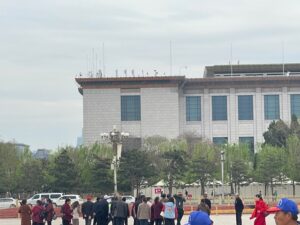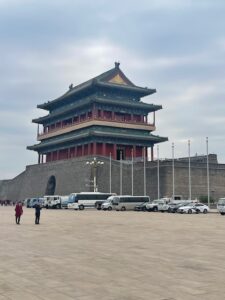
We started day two by having a delicious breakfast buffet at the hotel and boarding the motor coach for day two of our Beijing adventure. We visited Tiananmen Square on our first stop. This area, outside China, is best known for the 1989 protests and massacre that ended with a military crackdown due to international media coverage, internet and global connectivity , its political implications and other factors. Estimates of the death toll vary from several hundred to several thousand with thousands being wounded. Government sources downplayed the violence and portrayed the public as supportive of the crackdown. In the days after the protest, the CCP attempted to control access to information and confiscated film from foreign journalists.
Inside China, the square is a Monument to the People’s Heroes, The Great Hall of the People, the National Museum of China, and Mausoleum of Mao Zedong. Little, if anything about the massacre is known by most Chinese due to strict censorship of knowledge of the crackdowns by the Chinese Communist Party. Many Chinese people were present and it was clear that their national pride is important to them. Our guide warned us prior to entering the square that conversation regarding, “the incident” was forbidden and explained that the Chinese people that traveled to see the square were considering it a trip of a lifetime. He also warned us that many of the people present had likely never seen Westerners and to be prepared for pointing, comments and requests for pictures especially if you were blonde and blue eyed. This was true, in every respect. Excitement (from visitors) was evident and security (from guards/soldiers/cameras) was abundant.
From Tiananmen Square we entered The Forbiddden City – a vast city within a city – a sprawling complex that includes temples and Imperial houses, including a harem built to house the Emperor’s concubines. It was so named because access to the area was barred to most of the subjects of the realm. Government functionaries and even the imperial family were permitted only limited access; the emperor alone could enter any section at will. The Forbidden City is said to have 9,999 rooms. It went on and on and on…you get the idea. There is no way to see it all in a day’s time or to try to show it through pictures. We walked the square and the city for hours and walked over 6 miles in the time spent there. The Forbidden City is the largest palace complex in the world. There are more than 90 neighborhoods, 980 buildings and more than 8728 spaces. It is the largest medieval wood construction collection in the world. 24 Chinese emperors resided in the Forbidden City. Its construction began in 1407 and was completed only 14 years later in 1420. It is said that a million workers including one hundred thousand artisans were driven into long-term hard labor to complete the construction. Quite interestingly, when inside, you can see the backdrop of skyscrapers in what they refer to as New Beijing.
From there our last stop was the Temple of Heaven – an outstanding example of simple but impressive Imperial architecture, set in a beautiful park that is an oasis in the city. The temple was founded in the first half of the 15th century and is a dignified complex of buildings set in gardens and surrounded by pine woods. In its overall layout it symbolizes the relationship between earth and heaven – the human world and God’s world – which stand at the heart of Chinese cosmogony, and also the special role played by emperors within that relationship. Emperors prayed to heaven for good crops.
Back to the motor coach and back to the ship. Outside of our hotel time, many of the places we visited did not have Western toilets. This was a challenge for many of us. Squatting to urinate and then carrying your own “wipe” was a new experience, for me. Needless to say, our tour guide has us drinking water when advised to avoid having to use the bathroom and warning us in advance about the conditions for each stop. The men on the tour were not as challenged for the obvious reasons. While enjoying our time in Beijing, I was very happy to be back onboard and have access to my phone (other than using it as a camera) and getting back to luxury of toilets and toilet paper! It’s the little things. 😉
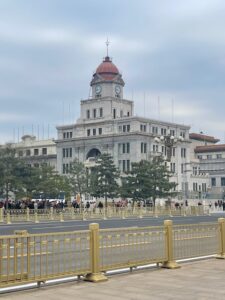
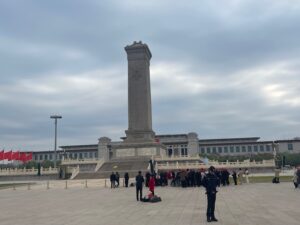
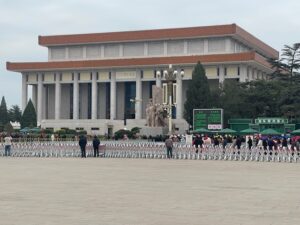
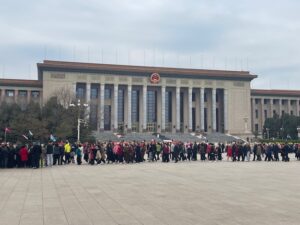
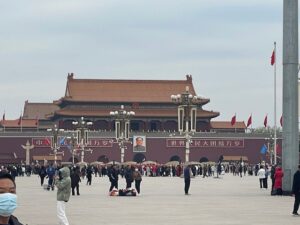
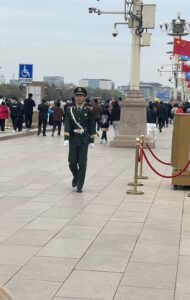
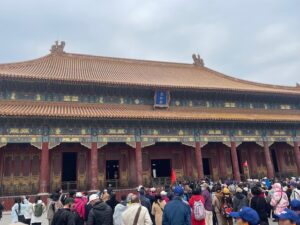
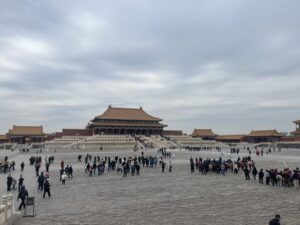
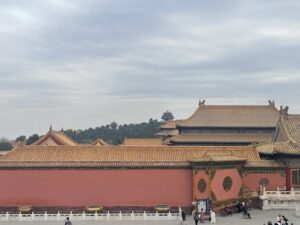
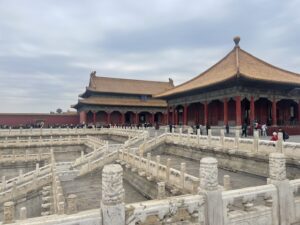
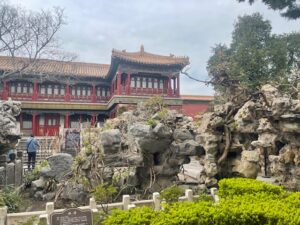
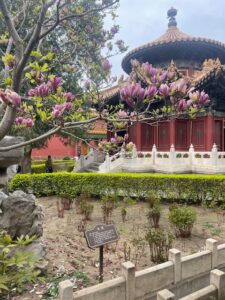
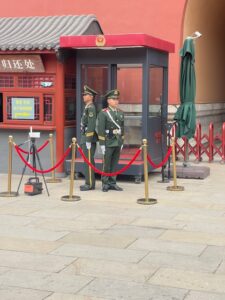
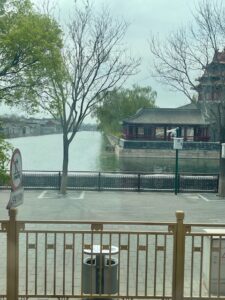
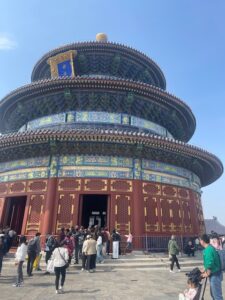
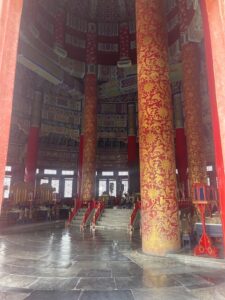
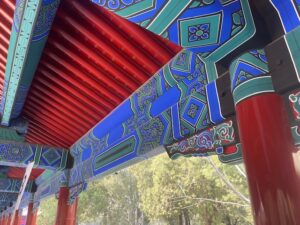
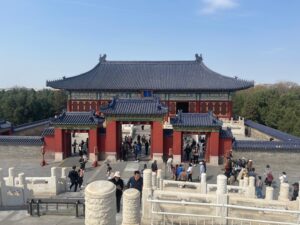
SCALE
We can cite numbers all we might like. To see the scale of this place changes your perspective. Tenjin’s population is 15.x million, Beijing’s population is is almost 22 Million. These two “towns” are 70 miles apart. 37.x Million people, We in MSP are a one ring city (494 and 694) . Beijing is a 5 ring city. I have trouble thinking of an American city that is 5 rings. The number of people that can fit in Tiananmen Square is about 3 million. -Nearly 3/5ths the population of Sweden.- We can disagree with the way the Chinese do things but we can’t actually feel the scale. One needs to be on the ground to appreciate it and even that is not enough.
With my background, I fear the surveillance state. I made sure our devices did not log onto a Chinese network. But that is not enough. They make no bones about what they are doing. At immigration, I stood in front of a “Biometric collection terminal” said so right on the device. Ugh. Passport scans to get into the Forbidden city, the Square, at the hotel. Police everywhere. The message is simple — comply. On this point I came away with one relief point – I’m visiting. I (we?) do not appreciate what these people are up against. How does one go about how to manage this scale? This comes from the perspective of how to build infrastructure for this population, there is construction everywhere. When there’s an apartment building complex there are often hundreds of 30-40 story apartment buildings.
I watched the people. They are happy people that have pride in their country. I don’t know why this surprised me but I was surprised. If these people were called to defend China they would: happily and at scale. Additionally their competence is very good – in these two cities there is very little sign of backwardness. The cars trucks, ports, most things (sans the toilets) are modern.
I was impressed. I got the following picture of surveillance tech at Tiananmen square. They would not let you take pictures of the police officers or the police vans etc. Still not much for the surveillances state.
A very interesting and exciting place. I expect big (and I mean big) things from this country.
